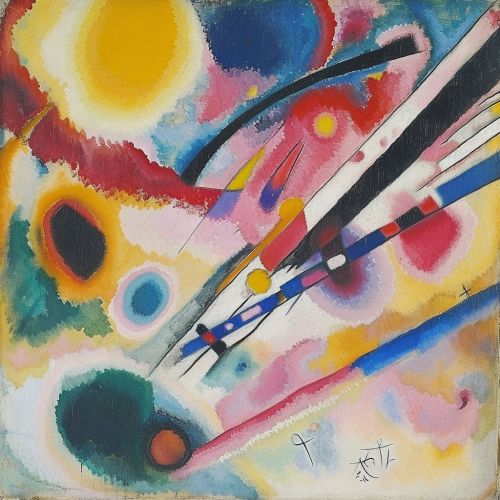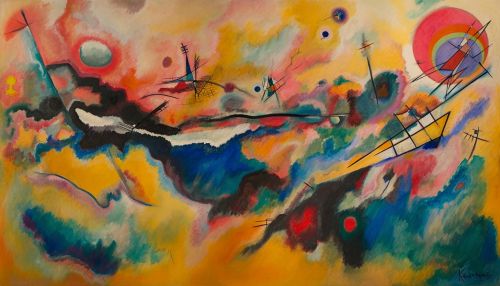Wassily Kandinsky
Early Life
Wassily Wassilyevich Kandinsky was born on December 4, 1866, in Moscow, Russia. His parents were Lidia Ticheeva and Vasily Silvestrovich Kandinsky, a tea merchant. Kandinsky's early life was influenced by a mix of cultural experiences, including Russian folk art and religious icons. He also had a synesthetic perception, which allowed him to associate colors with specific musical tones.


Education
Kandinsky studied law and economics at the Moscow University from 1886 to 1892. Despite his interest in art, he chose a more traditional career path. However, his passion for art persisted, and he took drawing classes in his spare time. After finishing his studies, he worked as a law teacher at the Moscow Faculty of Law.
Artistic Career
Kandinsky's artistic career began when he moved to Munich, Germany, in 1896 to study at the Anton Ažbe's private art school. He later joined the Munich Academy of Fine Arts. His early works were influenced by Russian folk art and French Impressionists, especially Monet's Haystacks series.
In 1901, Kandinsky co-founded the art group "Phalanx" and started an art school. His art began to shift towards abstraction after a trip to Tunisia in 1904, where he was inspired by the vibrant colors and light.
Kandinsky's first abstract watercolor was created in 1910, marking a significant shift in his artistic style. He believed that abstract art could evoke emotions in the same way music does, a concept he explored in his theoretical writings, particularly in "Concerning the Spiritual in Art" (1912).
In 1911, along with Franz Marc, Kandinsky co-founded the influential art movement "Der Blaue Reiter" (The Blue Rider). The group was central to the development of abstract art and expressionism in the 20th century.
During World War I, Kandinsky returned to Russia. He worked in art education and museum reform, contributing to the development of the Russian avant-garde. In 1921, he returned to Germany to teach at the Bauhaus, a revolutionary school of art, architecture, and design. His time at the Bauhaus was marked by the production of geometric abstract art.
After the Bauhaus was closed by the Nazis in 1933, Kandinsky moved to Paris. His late works, created in France, were marked by biomorphic forms and bright colors, influenced by surrealism and the scientific discoveries of the time.
Kandinsky continued to paint until his death on December 13, 1944, in Neuilly-sur-Seine, France. His influence on 20th-century art is immeasurable, and he is widely regarded as a pioneer of abstract art.


Legacy
Kandinsky's work has had a profound influence on the development of abstract art. His theoretical writings, particularly "Concerning the Spiritual in Art," have been influential in understanding the emotional and spiritual dimensions of abstract art. His work continues to be exhibited and studied worldwide, and his contributions to the Bauhaus and the Russian avant-garde have been widely recognized.
